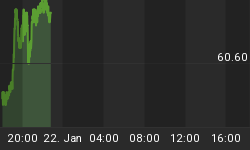When, during the invasion of Iraq, the United States Government issued its famous deck of playing cards with the 52 arch villains of the Iraqi police state, Saddam Hussein's face adorned the Ace of Spades. If the Obama Administration wanted to engage in a similar public relations campaign for the real estate crisis, the top card should be reserved for Alan Greenspan.
Yet in a speech this Tuesday before the National Association of Realtors, Sir Alan "the-bubble-blower" claimed that his low interest rate policies in the early and middle years of this decade had no effect on mortgage rates or real estate prices. As a result, he claims no responsibility for the subprime mortgage crisis. But even current Treasury Secretary Timothy Geithner, who shared interest rate policy responsibility as governor of the New York Fed during the Greenspan regime, recently admitted that overly accommodative policy helped inflate the bubble. So what does Greenspan know that everyone else doesn't?
His primary defense is that mortgage rates were a function of long-term interest rates which were simply not responding to the movement in short term rates, which he did control. While it is true that the flow of capital from foreign creditors with excess dollars did keep long rates low despite rising short rates, this "conundrum" was not the leading factor in the housing bubble. Although rates on thirty-year fixed rate mortgages are based on long-term bonds, by 2005 such loans had become an endangered species. The housing bubble was all about adjustable-rate mortgages with 1-7 year teaser rates primarily based on the Fed funds rate.
The rock bottom teaser rates, permitted by the 1% Fed funds rate, were the primary reason that many home buyers were able to qualify for mortgages they couldn't otherwise afford, and in turn, to bid up home prices to bubble levels. By pushing down the cost of short-term money, the Fed enabled homebuyers to make big bets on rising real estate prices. Without the Fed's help, few borrowers would have "qualified" for these risky mortgages and real estate prices never would have been bid up so high.
Greenspan expresses exasperation now, as he did then, that his careful nudging of interest rates higher by quarter point increments did not translate into corresponding increases in long-term rates. Unfortunately, according to Greenspan, the markets would not cooperate with his wise guidance, and to his dismay, mortgage rates fell despite his best efforts. As they say in Texas, this dog will just not hunt. If the "measured pace" of his quarter point hikes were too slow to produce the desired effect, why didn't Greenspan jack up the pressure? With interest rates far below the official inflation rate for many years during the bubble, he certainly had plenty of room to maneuver. The claim that he was unhappy results of his rate hikes, despite his having done nothing to adjust that policy, is ridiculous.
In addition to his colossal errors on interest rate policy there were many other ways Greenspan blew air into the real estate bubble. One example was what the market called the "Greenspan put." By creating the perception in word and deed (since proven accurate) that the Fed would backstop any major market or economic declines, lenders became more comfortable making risky loans. In an often quoted 2004 speech, Greenspan went so far as to actively encourage the use of adjustable-rate mortgages and praised home equity extractions for their role in contributing to economic growth. In fact, rather than criticizing homeowners for treating their houses like ATM machines, he often praised the innovative ways in which such homeowners were "managing" their personal balance sheets. Greenspan was as much a proponent of leverage for homeowners on Main Street as he was for bankers on Wall Street.
The bottom line is that Greenspan fathered the housing bubble and now he refuses to acknowledge kinship of his wayward child. His denial of responsibility is an act of stunning bravado, and is a testament to his ability to turn even the simplest of situations into an impenetrable tangle of theories and statistics. The private sector jokers who now hold top dishonors in our pack of economic villains are easily trumped by the Maestro. The fact that Greenspan still has any credibility shows just how little understanding the general public, including Wall Street and the media, actually have about this crisis.
For a more in depth analysis of our financial problems and the inherent dangers they pose for the U.S. economy and U.S. dollar, read my just released book "The Little Book of Bull Moves in Bear Markets." Click here to order your copy now.
For a look back at how I predicted our current problems read my 2007 bestseller "Crash Proof: How to Profit from the Coming Economic Collapse." Click here to order a copy today.
More importantly, don't wait for reality to set in. Protect your wealth and preserve your purchasing power before it's too late. Discover the best way to buy gold at www.goldyoucanfold.com. Download Euro Pacific's free Special Report, "Peter Schiff's Five Favorite Investment Choices for the Next Five Years", at http://www.europac.net/reports.asp. Subscribe to our free, on-line investment newsletter, "The Global Investor" at http://www.europac.net/newsletter/newsletter.asp. And now watch the latest episode of Peter's new video blog, The Schiff Report, at http://www.europac.net/videoblog.asp.
















